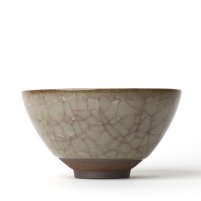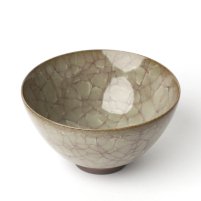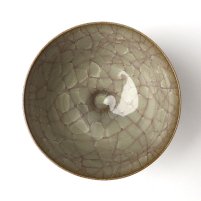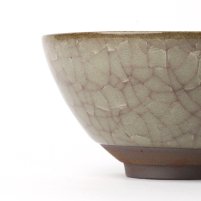KYO YAKI 京焼 / KIYOMIZU-YAKI 清水焼
Kyo- and Kiyomizu-yaki are terms often used together or interchangeably for stoneware or porcelain pottery produced in the ancient imperial city of Kyoto, and are representative of a wide variety of different styles of ceramics. From 794 to 1603, Kyoto was the imperial capital and attracted the most skilled artisans in the country. Even after the seat of government was moved to Edo, now Tokyo, Kyoto remained the cultural and intellectual centre of Japan. As such, it attracted Japan's most skilled artisans, who were supported by the nobility as well as the purchasing power of the market. This gave Kyô-yaki a special status in Japanese ceramics and for a long time it even determined the style of the whole country. Typical Kyoto wares are decorated with colourful, hand-painted motifs using overglaze enamel pigments: a technique that emerged in the 17th century and is still a trademark of Kyo-yaki today.
Seiji 青磁 – Celadon
Literally “green porcelain”, or celadon as it has long been known in Europe, is a type of jade green pottery that originated in ancient China. The glaze, known as Seiji in Japanese, is an ash glaze containing iron oxide, which is reduction fired at temperatures of over 1,200 degrees celsius, resulting in colours that (traditionally) vary from blue to green depending on the iron ratio and firing methods. The technique spread to Korea, Southeast Asia and Japan – where powder blue funsei (粉青) celadon wares produced in China during the Southern Song Dynasty (1127-1279) were especially cherished. Like fissures on the ice of a frozen lake as Spring approaches, the cracking that appears on the surface of glazed ceramics is known as kan-nyu (貫入) and, is highly regarded for its aesthetic quality. This crackle appears as a result of the differing expansion and contraction rates between the base and glaze during firing.











